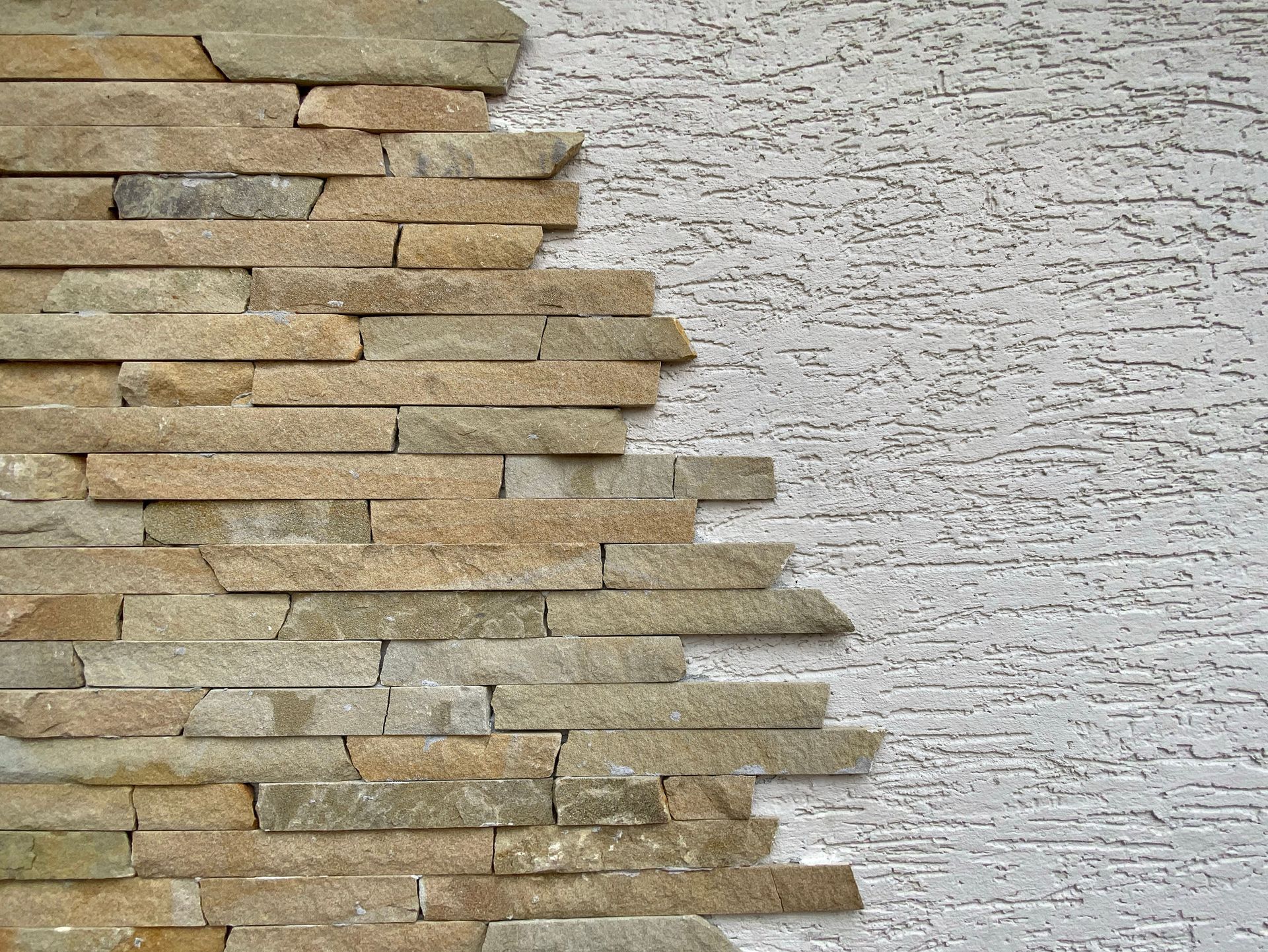October 14, 2025
Stone veneer siding has grown increasingly popular among homeowners seeking a timeless, elegant look for their property. It provides the visual appeal of natural stone without the weight and cost, transforming the exterior of any home. However, installing stone veneer siding is not as simple as nailing panels to a wall. Understanding what to expect during the process can help homeowners prepare and ensure a smooth, successful project. For those looking for professional guidance, hiring experts experienced in home exterior installation is highly recommended.
Initial Consultation and Planning
The first step in a stone veneer siding project involves a thorough consultation with your installer. During this phase, the contractor will assess the condition of your existing siding, exterior walls, and overall home structure. They will also discuss the homeowner’s style preferences, budget, and any desired features, such as accent walls or decorative patterns.
Professional installers specializing in home exterior installation can provide guidance on the best type of stone veneer for your property, whether it’s manufactured stone, natural thin stone, or full-bed stone panels. They will also consider the local climate, ensuring the materials selected will withstand weather extremes such as heavy rain, wind, or freezing temperatures.
At this stage, you may receive a project timeline and cost estimate. Clear communication about your expectations ensures there are no surprises later in the process. Planning carefully is crucial because stone veneer siding is a permanent enhancement to your home, and proper preparation sets the foundation for a successful installation.
Preparing the Exterior Surface
Before the stone veneer can be applied, the exterior walls need to be prepared properly. This typically involves removing existing siding, cleaning the wall surface, and repairing any structural issues. A clean, stable surface ensures the stone veneer adheres correctly and reduces the risk of long-term damage.
A moisture barrier is usually installed to protect the underlying structure from water infiltration. This is critical in preventing rot, mold, or other water-related damage. In addition, metal lath or wire mesh may be attached to provide a secure base for the mortar that will hold the stone veneer panels in place.
Professional contractors experienced in home exterior installation know how to prepare different types of surfaces, whether your home has wood, masonry, or fiber-cement siding. Proper preparation is essential for both the longevity and appearance of the finished project.
Applying the Mortar Base
Once the wall is prepped, the installer begins applying a mortar base. This layer is critical because it acts as the adhesive for the stone veneer panels. Typically, a scratch coat is applied to the metal lath or substrate, creating a rough surface that allows the stone to bond securely.
The scratch coat must be allowed to cure properly before proceeding. Depending on weather conditions and the materials used, this can take several hours or even a full day. Experienced installers know how to control the consistency of the mortar to prevent cracking or uneven adhesion.
Hiring professionals for home exterior installation ensures that the mortar is mixed and applied correctly. Mistakes in this step can compromise the integrity of the stone veneer, leading to potential repairs down the line.
Installing the Stone Veneer
With the mortar base ready, the installation of the stone veneer panels begins. Panels are typically applied from the bottom up, starting with a level row along the base of the wall. Each piece is carefully positioned, with mortar applied to the back of the stone and pressed firmly against the wall.
Installers often stagger the joints, similar to bricklaying, to create a natural and visually appealing pattern. The process requires precision, as uneven placement can affect both the aesthetics and structural integrity of the siding. Spacing and alignment are critical to maintaining a professional look.
Stone veneer installation can be labor-intensive, and depending on the size of the home and complexity of the design, it may take several days to complete. Experienced professionals specializing in home exterior installation can complete the work efficiently while maintaining high-quality standards.
Detailing and Finishing Touches
After the main stone veneer panels are installed, the installer focuses on detailing. This includes filling in gaps, adjusting edges, and ensuring uniformity across corners, windows, doors, and other architectural features. Mortar joints may be tooled to match the desired look, whether it’s a clean, modern finish or a rustic, hand-chiseled appearance.
These finishing touches make a significant difference in the final appearance of your home. Small adjustments and careful attention to detail separate a professional-grade installation from a DIY project. By hiring experts in home exterior installation, homeowners can be confident that every panel is placed with precision and consistency.
Curing and Drying
Once the installation is complete, the mortar must cure properly. This process can take a few days, depending on weather conditions, humidity, and the materials used. Proper curing is essential for the durability and longevity of the stone veneer siding.
During this period, it’s important to protect the walls from excessive moisture or physical impact. Professional installers will provide guidance on how to care for the newly installed veneer during this curing phase.
Sealing the Stone Veneer
After the stone veneer is installed and cured, it is essential to apply a sealer to protect the surface. According to Bob Vila, applying a sealer four weeks after stone veneer siding is installed protects the surface. Sealing helps guard against water damage, staining, and fading caused by exposure to sunlight.
Sealers can also enhance the color and texture of the stone, giving your home a polished, finished look. Professional installers who specialize in home exterior installation will use high-quality sealants and apply them evenly to maximize protection and aesthetics. Regular maintenance, including reapplication of the sealer as recommended, will help your siding maintain its appearance for many years.
Cleanup and Site Restoration
A crucial but often overlooked part of the installation process is cleanup. After the stone veneer is in place, installers will remove excess mortar, debris, and any protective coverings. They may also inspect surrounding areas, such as landscaping or driveways, to ensure no damage occurred during the installation process.
This step ensures your property looks neat and professionally finished. Contractors experienced in home exterior installation take pride in leaving a clean, organized job site, providing peace of mind to homeowners.
Common Challenges During Installation
While professional installation minimizes risks, some challenges can still arise during the process. Uneven surfaces, corners, and intricate architectural features may require additional attention. Weather conditions, particularly rain or extreme temperatures, can affect mortar curing times and adhesive performance.
Working with skilled professionals in home exterior installation ensures that these challenges are managed effectively. Experienced installers anticipate potential issues, adjust their techniques as needed, and ensure a smooth process from start to finish.
Benefits of Hiring Professionals
Hiring professionals for your stone veneer siding project offers multiple benefits:
- Expertise and experience: Professional installers have the knowledge to handle complex designs and unusual wall surfaces.
- Efficiency: Skilled crews complete the project faster than DIY efforts while maintaining quality.
- Warranty and support: Many contractors provide guarantees, offering peace of mind in case of future issues.
- Long-term durability: Proper installation, curing, and sealing extend the lifespan of your siding.
For homeowners looking to invest in their property, working with experts in home exterior installation ensures the best possible outcome.
From the careful selection of materials to precise detailing and proper sealing, every phase contributes to a finished product that enhances curb appeal, adds value, and provides reliable protection for years to come. By investing in professional installation and following recommended maintenance practices, homeowners can enjoy the elegance and durability of stone veneer siding with confidence.





